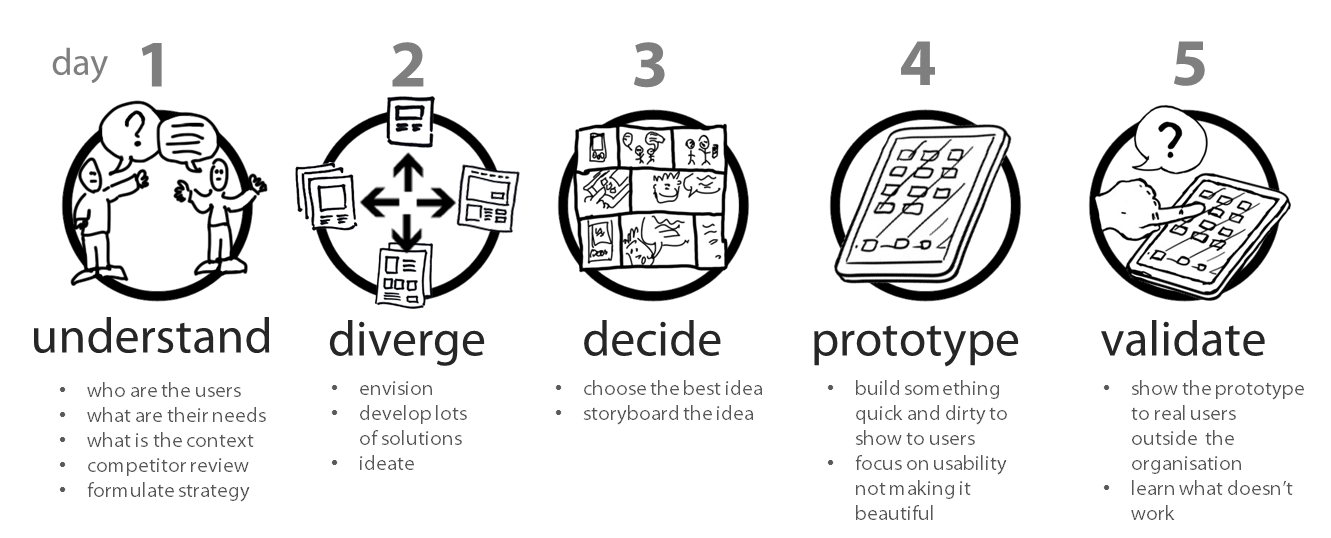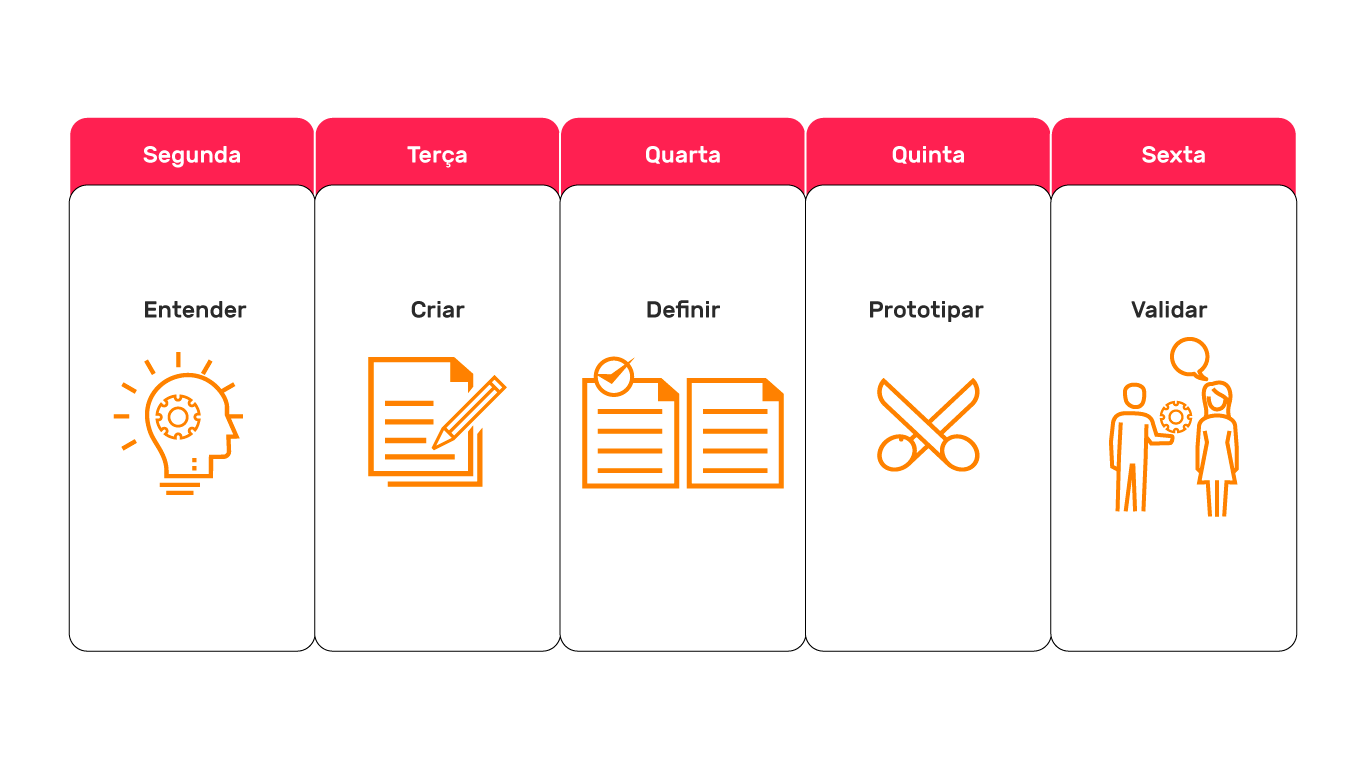Table Of Content

Share your Sprint Design Template with them and start asking some critical business questions and product questions. Input all the answers directly into the Sprint Design template, so it can be shared instantly with other teammates. Consider interviewing partners, gurus, internal experts, the end user and the stakeholders. A well-organized design sprint will help you validate ideas, choose the most relevant solutions, clarify your audience’s needs, and validate UI/UX in no time. Sometimes you can avoid sprints, especially if the project involves building particular elements step by step.
Get started in UX today
Once you’ve drawn out the storyboard, devote the entire day to building the prototype. On a whiteboard, draw five to seven frames (and up to no more than fifteen) to start the storyboard. The first frame should contain the opening scene to provide context and familiarity to your users just before they interact with your product.

Navigate the 5 stages of business growth for ultimate success
Plus, there’s a reason for the saying that the best ideas happen in the shower. Sometimes the best solutions pop up when people don’t actively think about them. You don’t want to spend half of your design sprint on the neverending discussion about which criteria are more important or which idea should make it to the final prototype. The classic sprint is the base – five days of fully focused work on solving a particular challenge.
If you’re not sure how to start, start here.
You have a set task for the day, and if you accomplish it, you move forward. This helps teams avoid wasting time “figuring out” so much and empowers them to get to work instead. The second important thing is that everything is time-bound. The four-step sketch approach to prototyping is designed to systematically turn abstract ideas into concrete solutions via rapid iteration. A design sprint example team usually consists of only 5–7 members, which makes managing the team easier. Knapp emphasizes that planning and preparation are crucial to organizing remote sprints.
But without truly understanding the root cause of the problem and all possible dependencies, we’ll most likely miss some critical pieces of the puzzle. Include a high-level decision-maker in as many sessions as possible. While they may momentarily step out if needed, their consistent involvement anchors the team by providing timely guidance and expediting pivotal choices. Their insights can effectively steer the sprint to ensure alignment with broader organizational goals.
This is a fun and fast warm up that can generate some creative ideas. All those ideas and sticky notes on the board need to be put into a map, which begins to flesh out where the project is headed. Making sure the team understands the context surrounding this product or service can be valuable in upcoming phases. You may have interviewed the stakeholder, but an on-site visit can be very educational. Allowing everyone real-time access and collaborative tools is particularly helpful for remote teams. At Miro, we start with creating a template for the Design Sprint.
of the Best UX Design Bootcamps For 2024
On Day 5, the team validates the prototype with real users, or “design partners,” and focuses on uncovering usability issues and gathering critical feedback. Web usability expert Jakob Nielsen suggests five users as an optimal number for user testing, balancing the need for diverse input against the law of diminishing returns. If you've heard of Jake Knapp, you'll know he's the guru behind the Design Sprint concept.
Putting Users at the Heart of a Global Design Sprint
Business Creativity & Innovation Sprint - innovation course - I by IMD
Business Creativity & Innovation Sprint - innovation course.
Posted: Fri, 25 Aug 2023 15:10:47 GMT [source]
Well, stick around, and we’ll go over all three questions so that, after reading this article, you’ll be ready to try one with your team. Our prototype is ready for user testing, and we’ll start the day by making sure that the team has the prototype and script at hand. A facilitator should ideally book a meeting room for the week, as it’s better to keep the design sprint team isolated from the rest of the company and focused on the sprint. And on Friday, you test that prototype with five target customers.
Then, let people share them with others with a commentary on why they believe it is a good direction. It will give everyone in the room a healthy dose of inspiration. Design sprint strives to address common problems with the design process. The result of this approach is often solutions that look pretty but are unlikely to truly nail the problems they were designed to solve.
A Design Sprint is a framework that can be used with an on-site or even a remote team. However, in a distributed team situation, it is best to use members that are experienced in Design Sprints or have an experienced Sprint Master to lead them. The timeline of a Design Sprint, which is used to design and test solutions within a short time frame, is typically 2-5 days. Google Maps’ two wheeler mode is a great case study in co-designing.
For smaller problems, you can even accommodate the whole cycle in one day. One of the main benefits of a design sprint is the time pressure it creates. After all, work expands to the time allocated for its completion. It’s critical to balance the perfect design process with the constraints we have. But not every problem requires the whole discovery process and working from scratch. You might work on an issue that’s already very well-defined or even already have some potential solutions on the table.
Each phase takes approximately 1 day to perform (8 hours) and all 5 phases take approximately 40 hours to execute in full. The use of a Miro for Design Sprints gives your team the ability to flip between comments, phases and feedback in one shared space. It frees up time and increases productivity, but most importantly it can provide a 360-degree view of the Sprint at each phase.
The order of the necessary sprint stages and their nature entirely depend on the project’s type and the complexity of the goals. A design sprint should involve all core team members and other parties interested in achieving effective results. Each participant plays an important role in the sprint cycle and ensures the productiveness of the team’s collaboration. Now, let’s find out the reasons for conducting a product design sprint. While design sprint is not a silver bullet or a perfect approach, I strongly encourage you to experiment with them and determine if they can have a role in your context. Although I heard a few times that people tried it out and didn’t like this approach, I’ve yet to hear someone say a design sprint was a waste of time in general.

No comments:
Post a Comment